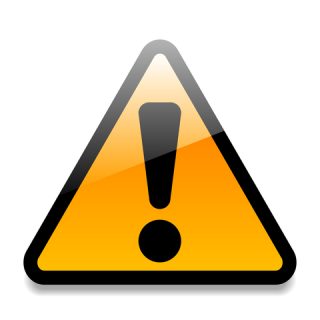5 Foot Signs You Should Never Ignore
 Written by Michelle Champlin BSc Pod., M.Ch.S., S.R., Ch., (UK)
Written by Michelle Champlin BSc Pod., M.Ch.S., S.R., Ch., (UK)
Most of us experience swollen feet at some point. If it lasts more than a couple of days, or is accompanied by other signs such as pain, persistent cough, change in skin colour or sensation, or is in only one leg, you should see your Doctor or GP straight away.
1. Cold Feet
While it is possible to simply have cold sensations without any serious underlying cause, chronically cold toes can be a sign of impaired blood circulation. Smoking and smoking-related conditions like COPD can reduce the lungs’ ability to fully absorb oxygen, causing reduced oxygen levels in the blood. Additionally, peripheral vascular disease (PVD) and some other forms of heart disease can cause your arteries to narrow, which can impede the flow of blood throughout the body. Extremities like hands and feet are particularly susceptible to poor circulation, which may manifest itself through cold sensations. (It’s one of the reasons why a Podiatrist tests circulation in the feet of a Diabetic regularly – to pick up any changes early before it affects the rest of the body / organs). If you notice that your feet are almost always cold or numb, consult your Doctor or Podiatrist to figure out whether there are any underlying medical problems.
2. Itchy Feet
The most common cause of itchy, scaly skin on the feet is a fungal infection such as athlete’s foot, which is extremely common in hot, sandy climates such as the UAE. These infections thrive in damp, dark environments, usually beginning between the toes and the risk is raised by enclosed shoes of synthetic, non breathable material and sweaty feet. While athlete’s foot is contagious, it is relatively easy for a Podiatrist to treat. Michelle Champlin, Chief Podiatrist at Dubai Podiatry Centre advises a visit to your Podiatrist to remove any hard skin (the fungal spores feed on keratin in dead skin), check your toenails in case it has spread, and to provide a strong once off topical anti-fungal along with follow-up at home medication such as antifungal powder and spray to treat your socks and shoes with to prevent reinfection. More of Mrs Champlin’s tips on getting rid of fungal feet can be found here. In severe cases, oral antifungals may be prescribed. In some cases, itchy feet may also result from an allergic reaction to skin creams or from an immune condition like psoriasis or eczema.
3. Skin Discolouration
A rash or fungal infection like athlete’s foot commonly leads to scaly, reddish skin, or also white, powdery looking skin. Many other conditions also result in discoloration of the feet. One condition, known as Raynaud’s phenomenon, is characterized by a sequence of color changes in the skin as a response to cold or stress. During a Raynaud’s flare up, the affected areas (usually feet or hands) turn white initially as the arteries begin to narrow and blood flow is reduced. They may start to feel cold or numb and eventually turn blue as blood flow is further restricted. Sometimes, as circulation improves, the skin may turn red before finally returning to normal. Raynaud’s occurs most frequently without an underlying disease. In some cases, however, Raynaud’s may be an early sign of a more serious condition like rheumatoid arthritis or lupus.
4. Swollen Feet
Most people experience swelling in their feet (called edema) at one point in their lives and in hot climates such as the UAE mild swelling of the feet is a normal consequence to a hot climate. Often, the cause of the swelling is due to something as simple and temporary as standing for a long period of time, wearing tight footwear, or flying. In these cases, simple measures such as following in-flight exercises, walking around the cabin where possible, wearing flight socks and comfortable footwear can all help. However, if the swelling lasts for more than a couple of days, it could be a sign of an injury such as an ankle sprain or break, or more serious medical condition. Fluids may build up in your legs and cause swelling as a result of congestive heart failure, kidney disease or even as a side effect of prescription medications for diabetes and high blood pressure. Swelling may also result from inflammation stemming from rheumatoid arthritis or osteoarthritis. It is important to seek emergency medical attention if swelling is accompanied by symptoms such as chest pain, difficulty breathing or dizziness, as these could indicate a blood clot or another serious heart condition. It is important whether the swelling is to one or both feet or legs – swelling to one leg only can be a sign of DVT/blood clot and emergency medical care should be sought. Other causes of swollen feet include pregnancy, lymphedema or gout. In any case, see your GP or Podiatrist for unexplained swelling in your feet that does not go away.
5. Burning Feet
The sensation of burning feet can vary from mild (numbness and tingling) to severe (distracting pain that disrupts your sleep). Something as simple as tired feet or a common infection like athlete’s foot can cause short-term symptoms like burning or tingling. In more severe cases, burning in the feet could be a sign of nerve damage from diabetes or a circulatory condition known as peripheral vascular disease (PVD). According to the International Diabetes Federation, as of 2014 10.7% of the population in the UAE had been diagnosed with diabetes – that’s 803,900 people, with this number on the increase. Seek medical attention from your GP or Podiatrist if the burning sensation lasts for several weeks, if symptoms become more intense and painful or if you start losing feeling in your toes or feet. In the meantime, rest and elevate your feet to ease symptoms. Additionally, bathing your feet in cold water can also reduce pain and burning. Burning feet may signal that your diabetes management / medication needs to be altered and early intervention from your Doctor or endocrinologist is crucial. Burning-like sensation can also be caused by nerve entrapment (neuromas).
If you are worried about any change in your feet, contact the expert Podiatrists at Dubai Podiatry Centre without delay. Contact +971 4 3435390.







